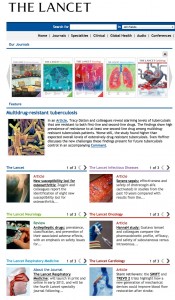 As London counted down the final days before the beginning of the 2012 Olympic Games, The Lancet published a Series on physical activity, including a new analysis that quantifies the global impact of physical inactivity on the world’s major non-communicable diseases. The Series also reviews current levels of physical activity and trends worldwide, why some people are active and why some are not, evidence-based strategies for effective physical activity promotion, and how a multi-sector and systems-wide approach that goes way beyond health will be critical to increase population-levels of activity worldwide.
As London counted down the final days before the beginning of the 2012 Olympic Games, The Lancet published a Series on physical activity, including a new analysis that quantifies the global impact of physical inactivity on the world’s major non-communicable diseases. The Series also reviews current levels of physical activity and trends worldwide, why some people are active and why some are not, evidence-based strategies for effective physical activity promotion, and how a multi-sector and systems-wide approach that goes way beyond health will be critical to increase population-levels of activity worldwide.
- Rethinking our approach to physical activity
- Physical activity: more of the same is not enough
- Stressing harms of physical inactivity to promote exercise
- Physical activity for people with disabilities
- Policies to promote physical activity in Brazil
- Effect of physical inactivity on major non-communicable diseases worldwide: an analysis of burden of disease and life expectancy
- Physical activity levels of the world’s population: Surveillance progress, gaps and prospects
- Why are some people physically active and others not? Understanding the Correlates of Physical Activity
- Evidence-Based Physical Activity Intervention: Lessons from Around the Globe
- The Implications of Megatrends in Information and Communication Technology and Transportation for Changing Global Physical Activity
- The pandemic of physical inactivity: global action for public health
All articles are available free of charge and many will have a direct relevance to the activities that are being held around the world to mark World Physical Therapy Day on Sept 8th.